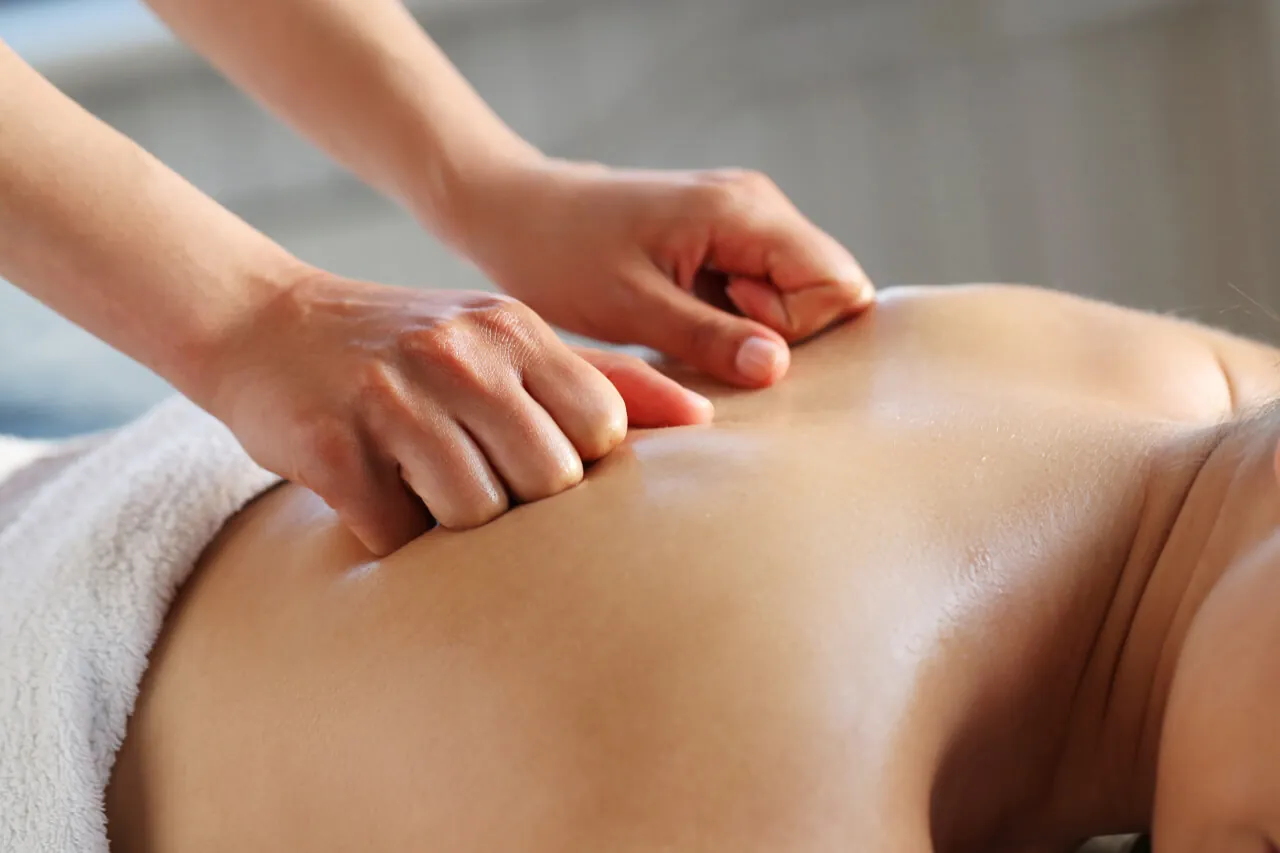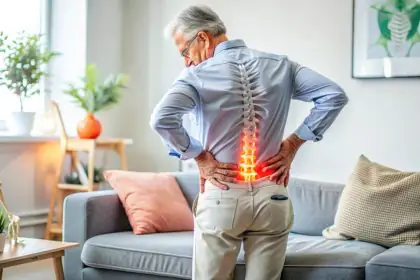Life has a way of knotting itself onto our bodies.
Stress weaves into our shoulders, tension braids our necks, and anxiety clenches our jaws.
We walk around as walking bundles of aches and pains, yearning for release.
Well, dear reader, there’s an ancient antidote for this modern affliction, a magic balm waiting to melt away the knots and unravel the tension – massage therapy.
Yes, I know what you’re thinking.
“Massage?
Isn’t that just a fancy rubdown for rich people?”
Hold that skepticism just a moment, because massage therapy is not a spa-day indulgence; it’s a holistic powerhouse with benefits that go far beyond a fleeting feeling of relaxation.
Imagine a world where pain fades into gentle echoes, muscles purr with renewed suppleness, and your mind finally catches up with your slowing breath.
That’s the world massage therapy invites you into.
Massage can be beneficial for addressing various specific conditions, such as:
- Anxiety
- Depression
- Digestive disorders
- Fibromyalgia
- Headache
- Insomnia
- Nerve pain
- Postoperative care
- Scar tissue
- Soft tissue strains and injuries
- Sports injuries
- Temporomandibular (TMJ) disorders
Massage offers a range of physical benefits, such as:
- Enhanced circulation
- Reduced muscle stiffness
- Diminished joint inflammation
- Improved sleep quality
- Accelerated recovery between workouts
- Increased flexibility
- Alleviated pain and soreness
- Reinforced immune response
In addition to its physical advantages, massage contributes to various mental health benefits.
Even individuals primarily seeking physical benefits often report feeling less stressed post-massage.
Additional mental benefits encompass:
- Lowered stress levels
- Enhanced relaxation
- Improved mood
- Reduced anxiety
- Increased energy
- Heightened sense of wellness
So, let’s crack open the treasure chest of massage and peek at the gems within:
Pain Relief Symphony
Think of pain as a discordant note in the symphony of your being.
Massage therapy, with its skilled strokes and gentle kneads, can act as a maestro, harmonizing your tissues and reducing inflammation.
Whether it’s chronic back pain, a persistent ache in your shoulder, or the sharp sting of a recent injury, massage can become the conductor, orchestrating a symphony of relief.
Muscle Mend & Flexibility Friend
Ever sat down and felt like your legs were made of granite?
Massage therapy offers a warm welcome to your tightly strung muscles.
By increasing blood flow and loosening fascia, those tight bands of tissue begin to soften, regaining their natural elasticity.
Suddenly, reaching for your toes doesn’t feel like a contortionist act, and bending isn’t synonymous with groaning.
You rediscover the joy of fluid movement, your body a grateful instrument playing a pain-free melody.
Stress Slayer & Relaxation Rockstar
Ah, stress, the unwelcome guest that overstays its welcome in our minds and bodies.
But fret not, for massage therapy holds the key to eviction.
The gentle pressure and rhythmic strokes on your body trigger the release of endorphins, those feel-good chemicals that chase away tension and anxiety.
Your nervous system sighs in relief, muscles melt into the touch, and the symphony of stress softens into a soothing lullaby.
Benefits of Massaging
Improved Flexibility
Massage therapy can enhance the range of motion, providing benefits to athletes and aiding those facing mobility challenges.
Injury Prevention
Regular massage sessions contribute to the maintenance of healthy connective tissues and muscles, playing a crucial role in preventing injuries.
Stress Reduction
Prolonged stress leads to physical tension.
Consistent massage therapy not only helps alleviate stress and anxiety but also triggers the body’s relaxation response, leading to a decrease in cortisol levels, the stress hormone.
Enhanced Sleep Quality
Massage therapy has proven effective in addressing insomnia, promoting better sleep patterns through induced relaxation.
Sufficient sleep, in turn, fosters pain relief.
Optimized Blood Circulation
Massage promotes optimal blood circulation, facilitating the delivery of intracellular nutrients and oxygen while aiding in the elimination of waste products.
Decreased Risk of Overuse Injuries
Athletes often face painful overuse injuries due to repetitive movements.
Massage aids in preventing such injuries by supporting muscle recovery post-intensive physical activities.
Anti-inflammatory Benefits
Swelling intensifies pain, and certain massage techniques can effectively reduce inflammation and edema, alleviating discomfort.
Relief from Headaches and Migraines
Massage therapy is recognized for relieving tension headaches and migraines by relaxing the muscles in the head and neck.
Elevated Mood
Massage contributes to overall well-being by stimulating the production of neurotransmitters like serotonin, fostering an improved mood.
Beyond the Physical
While the physical benefits are undeniable, massage therapy’s magic extends far beyond the muscles.
It’s a gateway to improved sleep, allowing your mind and body to truly unwind.
It can boost your immune system, helping your body fight off those pesky invaders.
It can even decrease symptoms of depression and anxiety, painting your inner world with brighter hues.
Finding Your Perfect Flow
The beauty of massage therapy lies in its versatility.
Just like music has different genres, massage has varied styles.
Want a deep tissue massage to knead out those stubborn knots?
There’s a specialist for that.
Craving a soothing Swedish massage to melt away stress?
Consider it done.
Feeling adventurous?
Explore the rhythmic flow of Thai massage or the rejuvenating warmth of hot stone therapy.
There’s a style waiting to harmonize with your needs and preferences.
Post-massage sensations commonly include feelings of relaxation, fatigue, or even soreness, as your muscles undergo manipulation by the massage therapist.
The aftermath might resemble the effects of a workout, and in some cases, individuals may experience headaches or nausea.
Contrary to the belief that massage must be painful to be beneficial, it doesn’t necessarily need to induce discomfort to be effective.
If the pressure applied by the massage therapist feels too intense, it’s perfectly acceptable to request lighter pressure.
Occasionally, during the massage, you might encounter a sensitive muscle spot that resembles a knot, causing some discomfort as the therapist works on it.
However, if the discomfort turns into pain, it’s crucial to communicate this to the therapist, as excessive pressure during a massage can lead to serious issues.
When choosing a massage therapist, approach the decision with the same conscientiousness as selecting other healthcare professionals.
Seek recommendations from your primary care provider or someone trustworthy.
Don’t hesitate to inquire about the therapist’s credentials, training, and experience.
Asking questions about the number of sessions needed, costs, and insurance coverage is also important.
A skilled therapist possesses a diverse array of techniques that can be tailored to your specific needs, and they should be responsive to your feedback, adjusting their methods accordingly.
Massage therapy is a safe and effective option for individuals of all ages.
Beyond being a pleasurable indulgence, it serves as a potent tool for taking control of your health and well-being, whether you’re addressing a particular health condition or simply seeking stress relief.
Your Body, Your Journey
Stepping onto a massage table is a step towards reclaiming your well-being.
It’s a commitment to listening to your body, honoring its whispers of discomfort, and celebrating its potential for healing.
Don’t be intimidated by the unfamiliar; remember, the therapist is your guide, navigating the landscape of your tissues with skilled hands and a keen eye.
Each session is a conversation, a dance between your needs and the therapist’s expertise.
A Final Note
So, dear reader, as you scroll through endless feeds and navigate the chaos of daily life.
Remember this:
Your body is not a battleground to endure.
It’s a temple to cherish, a symphony waiting to be played in perfect harmony.
And massage therapy is an invitation to become the conductor of your own well-being, to unravel the knots, reclaim your relaxation, and rediscover the blissful melody of a life free from pain and tension.
Take the first step, breathe deeply, and let the healing touch of massage therapy guide you back to your own flow.
Your body, your mind, and your soul will thank you for it.
This is just the beginning, a taste of the magic that awaits you.
In the next part, we’ll delve deeper into the different styles of massage, answer common questions, and empower you to find the perfect massage therapist for your journey.
Stay tuned, dear reader, because the symphony of well-being is about to begin.
FAQs
How does massage therapy contribute to stress relief?
Massage therapy promotes stress relief by triggering the body’s relaxation response.
It helps lower cortisol levels, the stress hormone, while encouraging a deep sense of relaxation through tactile massage.
Can massage therapy help with specific physical conditions?
Yes, massage therapy can assist with various physical conditions, including anxiety, depression, digestive disorders, fibromyalgia, headaches, insomnia, nerve pain, postoperative care, scar tissue, and both soft tissue and sports injuries.
What are the physical benefits of massage therapy?
Massage therapy offers numerous physical benefits, such as improved circulation, decreased muscle stiffness, reduced joint inflammation, better sleep quality, quicker recovery between workouts, enhanced flexibility, decreased pain and soreness, and a strengthened immune response.
What mental health benefits does massage therapy provide?
Beyond its physical advantages, massage therapy offers mental health benefits, including lower stress levels, improved relaxation, enhanced mood, decreased anxiety, increased energy, and an overall boost in the feeling of wellness.
What should I expect after a massage session?
Post-massage, it’s common to feel relaxed, tired, or occasionally sore, similar to the aftermath of a workout.
Headaches or nausea may occur, but massage doesn’t have to be painful to be effective.
If discomfort arises during the session, communicate with the therapist for adjustments.
How do I choose a qualified massage therapist?
When selecting a massage therapist, seek recommendations from your primary care provider or trusted sources.
Ask potential therapists about their licensing, certification, or registration, inquire about their training and experience, discuss the expected number of sessions, and clarify costs and insurance coverage.





